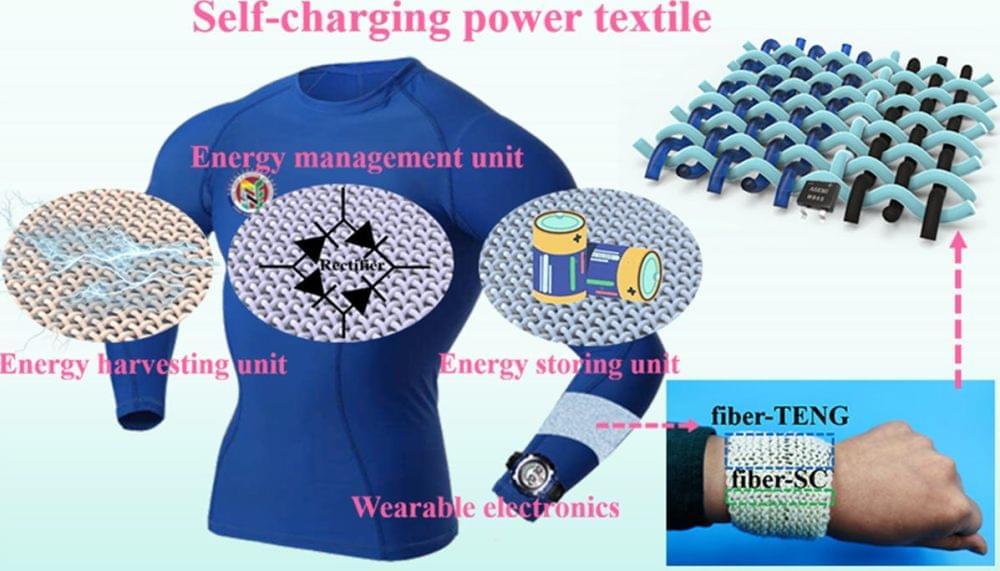Three days ago CNBC reporters visited Pepsi’s Frito-Lay facility in Modesto, California, where it is using Tesla Semi’s new electric trucks. CNBC wanted to see whether the Semis live up to the hype. Watching that report I learned a couple of very interesting details about Pepsi Tesla Semi operations and here I wanted to share with you.
Get the latest international news and world events from around the world.


Alan Turing and the Limits of Computation
Note: June 23 is Alan Turing’s birth anniversary.
Alan Turing wore many scientific hats in his lifetime: a code-breaker in World War II, a prophetic figure of artificial intelligence (AI), a pioneer of theoretical biology, and a founding figure of theoretical computer science. While the former of his roles continue to catch the fancy of popular culture, his fundamental contribution to the development of computing as a mathematical discipline is possibly where his significant scientific impact persists to date.

Physicists Discover a New State of Matter Hidden in The Quantum World
You’re familiar with the states of matter we encounter daily – such as solid, liquid, and gas – but in more exotic and extreme conditions, new states can appear, and scientists from the US and China just found one.
They’re calling it the chiral bose-liquid state, and as with every new arrangement of particles we discover, it can tell us more about the fabric and the mechanisms of the Universe around us – and in particular, at the super-small quantum scale.
States of matter describe how particles can interact with one another, giving rise to structures and various ways of behaving. Lock atoms in place, and you have a solid. Allow them to flow, you have a liquid or gas. Force charged partnerships apart, you have a plasma.

New Study Reveals A Hidden Mechanism for Controlling A Cell’s Molecules
Some mutations were like a tax rebate and raised the propensity of TAR to adopt its biologically active structures, while other modifications raised the tax and decreased the odds that TAR would adopt a biologically active structure.
Hidden mechanism may lead to new drugs
“What we found was a hidden mechanism for controlling the activity of a molecule in a cell,” says Al-Hashimi. By altering the propensity of TAR to form biologically active states—by changing the tax rate—the researchers could fine-tune the molecule’s activity in cells.

Porsche is developing an exclusive electric sports boat
With ambitious goals of being a leader in sustainable mobility, Porsche has joined forces with Frauscher Shipyard in Austria to engineer an electric yacht that is also intended to set standards on the water with its typical Porsche E-Performance. The vehicle is called the Frauscher x Porsche 850 Fantom Air highlighting the collaboration that made it possible.
Porsche.
This is according to a press release by the carmaker published on Saturday.

YouTuber turns a Raspberry Pi-powered truck into a giant printer
Many people love the Raspberry Pi (us included). Not only are the computing boards cheap, but you can do so much with them. Wild, wonderful projects spring up all the time with RPi boards as a central piece. The latest creation to catch our eye might just rank as one of the most astonishing: a truck transformed into a dot matrix printer.
As spotted by Tom’s Hardware, YouTuber Ryder Damen (who runs the channel Ryder Calm Down) uses a Raspberry Pi to control his homebrew “printer,” which involves a pickup truck, water, and a whole array of gear to spell out messages on the ground. Damen calls it “skywriting, but on the road.”
In the video, Damen explains how the idea came to be (watching trucks paint markers on the road), as well as the process of constructing the “printer” and the materials used. A plywood and a trailer hitch form the frame of the rig, with solenoids, valves, and hoses then mounted to the wood to serve as printer parts. The solenoids control the valves—when 12V current is applied to them, they open. Meanwhile, the hoses split the water flow from a central point (a pump and a bucket full of water) to each valve.

Wearable energy harvesting-storage hybrid textiles as on-body self-charging power systems
The rapid development of wearable electronics requires its energy supply part to be flexible, wearable, integratable and sustainable. However, some of the energy supply units cannot meet these requirements at the same time, and there is also a capacity limitation of the energy storage units, and the development of sustainable wearable self-charging power supplies is crucial. Here, we report a wearable sustainable energy harvesting-storage hybrid self-charging power textile. The power textile consists of a coaxial fiber-shaped polylactic acid/reduced graphene oxide/polypyrrole (PLA-rGO-PPy) triboelectric nanogenerator (fiber-TENG) that can harvest low-frequency and irregular energy during human motion as a power generation unit, and a novel coaxial fiber-shaped supercapacitor (fiber-SC) prepared by functionalized loading of a wet-spinning graphene oxide fiber as an energy storage unit. The fiber-TENG is flexible, knittable, wearable and adaptable for integration with various portable electronics. The coaxial fiber-SC has high volumetric energy density and good cycling stability. The fiber-TENG and fiber-SC are flexible yarn structures for wearable continuous human movement energy harvesting and storage as on-body self-charging power systems, with light-weight, ease of preparation, great portability and wide applicability. The integrated power textile can provide an efficient route for sustainable working of wearable electronics.

You are now entering the AItopia
Launching today, AItopia will explore AI’s impact on design, architecture and humanity both today and in the future. Dezeen features editor Nat Barker introduces the series.
The future has arrived. Having been depicted countless times in sci-fi literature and cinema over the decades, machines that can think for themselves are becoming a reality.
Artificial intelligence (AI) – that is, computers or contraptions performing tasks that would usually require a human brain – is a concept that has captured the shared imagination in some form since ancient times. But it was the British polymath Alan Turing who first seriously addressed the matter in his seminal 1950 paper Computing Machinery and Intelligence. “I propose to consider the question, ‘Can machines think?’” Turing wrote.
Money Expert Jaspreet Singh Says You Can Use ChatGPT To Become a Millionaire — Here’s How
Using ChatGPT can put you on the path to becoming a millionaire, according to a YouTube video from personal finance expert Jaspreet Singh.